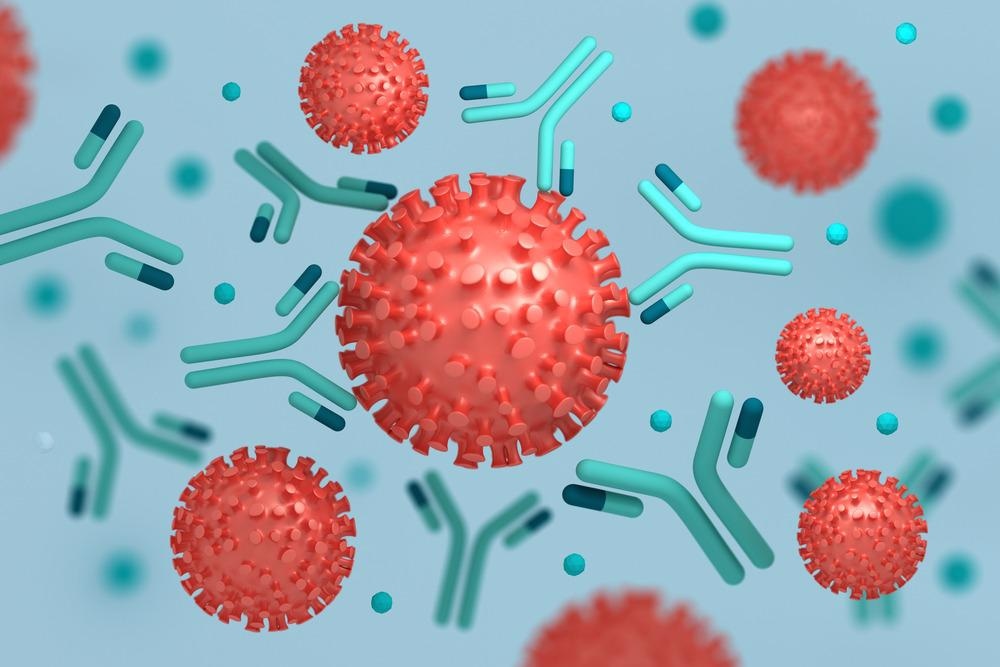The different variants of the severe acute respiratory coronavirus 2 (SARS-CoV-2) infection, and the mutations which have decreased the efficacy of vaccines, have triggered the release of research targeting epitopes.

Study: Nucleic acid delivery of immune-focused SARS-CoV-2 nanoparticles drive rapid and potent immunogenicity capable of single-dose protection. Image Credit: DariaRen/Shutterstock.com
This research, available as a pre-proof in the journal Cell Press, aimed to develop a spike-based DNA vaccine that focused on the Receptor-Binding Domain (RBD), which could impact the efficacy of antibodies.
The Necessity of Novel Vaccines
Vaccines for the SARS-CoV-2 (COVID-19) infection became a critical development point for researchers to attempt to reduce its impact and spread throughout different countries during the global pandemic.
The main focus for vaccine development was the spike (S) glycoprotein, and this is true of many vaccines in clinical use.
As a result of contracting the coronavirus infection, RBD-directed antibodies made up 90% of the neutralizing antibodies that patients were producing as an immune response against the virus. Additionally, with 2,500 antibodies being identified and reported as being elicited to target the spike protein specifically, researchers have denoted this RBD-directed immune response may be the most effective method for vaccine development.
Nanovaccines
Nanovaccines, which consist of nanoparticle immunogens that are multivalent and self-assembling, can enhance B cell activation. However, while this vaccine approach for the SARS-CoV-2 virus may be effective, it is difficult to translate clinically due to extensive manufacturing processes; additionally, this method may not activate the CD8+ T cells, which aid in cytotoxic T cell-antigen interactions.
The incorporation of nanotechnology within many industries has already proven to enhance various applications, and its use in drug delivery and vaccines has also had positive reports.
Vaccine antigens that are encoded within a DNA plasmid can be delivered directly in vivo, and DNA vaccines have been shown to be translatable within a short period of time – a benefit during a pandemic.
This can be shown through the development of a DNA-encoded full-length spike immunogen as a DNA vaccine which was ready for clinical evaluation within only 10 weeks.
The use of DNA vaccines is a novel method for developing effective vaccines was undertaken to improve and enhance the efficacy of current vaccines against the ever-mutating COVID-19 virus.
Novel Vaccine Research
DNA vaccines may be seen as more effective for vaccine development as they can be mass-produced easily, as well as being temperature stable; other benefits consist of not being associated with anti-vector immunity and being useful for mutating variants as it can be quickly reformulated, retaining efficacy.
These critical advantages make DNA vaccines a key technology during a pandemic.
The researchers of this innovative study have utilized their previously developed DNA-launched nanoparticle platform (DLNP), which has already been shown to produce fast and effective B cell immune responses as well as CD8+ T cells, as a potential single-dose vaccine encoding P.1 (gamma) mutations against the SARS-CoV-2 virus.
The novel research consisted of developing an advanced structural algorithm called Cloaking With Glycans (CWG) to optimize potential N-linked glycosylation sites (PNGS) within the RBD of the coronavirus to focus the immune response. This would model every possible glycan on the RBD and aid in producing an enhanced neutralizing response that targets the Receptor Binding Site epitope.
The PNGS may be a contributor to immune escape that has been seen in other viruses, which has shown mutability and subsequent variants. So, this approach may be significant in the development of novel therapeutics and effective vaccines.
Future Vaccine Translation
This novel strategy aims to improve immunogenicity within the elderly and immunocompromised populations, as well as enhance the efficacy of vaccines as a single dose or use as a booster. It would also aid in protecting the population against emerging variants or those that evade the immunity that current vaccines have attempted to provide.
Due to the nanoparticle design, it may also allow for a single, higher dose of the DNA vaccine, with neutralizing antibodies against the SARS-CoV-2 virus being seen after one week with a dosage of 1 mg in mice.
However, limitations of weight loss seen in some mice and low viral titers have led to a hypothesis of higher results with 10 mg, as previously seen in a separate study.
Utilizing an advanced vaccine technology through DNA formulation with immune focused nanovaccines may revolutionize the current standing of health policies. These have struggled to address the evolution of the virus, resulting in numerous repeat boosters that may not effectively target the mutated spike protein.
This novel approach may allow for a higher level of protection and quality care for the elderly, vulnerable and immunocompromised populations.
Continue reading: Analyzing the Antiviral Activity of Graphene Oxide Against COVID-19 and Other Viral Infections.
Reference
Konrath, K.,et al., (2022) Nucleic acid delivery of immune-focused SARS-CoV-2 nanoparticles drive rapid and potent immunogenicity capable of single-dose protection. Cell Reports, p.110318. Available at: https://www.sciencedirect.com/science/article/pii/S2211124722000298
Further Reading
Gheibi Hayat, S. and Darroudi, M., (2019) Nanovaccine: A novel approach in immunization. Journal of Cellular Physiology, 234(8), pp.12530-12536. Available at: https://doi.org/10.1002/jcp.28120
Disclaimer: The views expressed here are those of the author expressed in their private capacity and do not necessarily represent the views of AZoM.com Limited T/A AZoNetwork the owner and operator of this website. This disclaimer forms part of the Terms and conditions of use of this website.